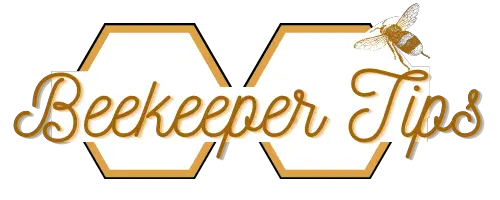In this article, we look at how bees initiate queen cell development and how the stages of queen cell development progress. The queen cell timeline starts with a freshly fertilized egg and ends with the emergence of a young virgin queen. This is a process that is crucial to the renewal and development of the beehive.
Table of Contents
Gender In A Beehive
In a beehive, fertilized eggs develop into female bees – either workers or queens. The unfertilized egg develops into a drone bee. Drones produce semen when mature and are regarded as male.
If A Queen and Worker Are Both Females, How Does That Work?
A beehive is a complex communal society. Managing a communal society is quite complex as individuals tend to always place their needs above those of others so as to ensure the survival of their genes. Genes are essentially selfish, and this is programmed into all life forms.
Pheromonal Dominance
In a beehive, a queen bee uses her position of pheromonal power to suppress the development of ovaries in her offspring. In this way, although workers are female, the queen suppresses the development of the worker’s ovaries, and the queen is the dominant reproductive.
For a worker bee, she cannot lay an egg as long as the queen is around. The only chance a worker bee has for her genes to pass on is through her mother producing another queen or drones, and as a result, the worker is loyal to the queen and largely unselfish. She will die defending the hive and her mother.
Queen Cell Development
As we have mentioned, the queen uses pheromones to maintain her reproductive dominance over the hive. Her pheromones are contact pheromones and as the bees touch each other, these pheromones get spread around the hive. Three main factors can cause the queen to begin to lose pheromonal dominance.
Swarming
If the hive gets too big. In this case, there are just so many bees that her pheromones cannot spread over all of the hive. The workers will use this opportunity to make queen cups – special cells that are bigger than worker cells into which a queen can lay an egg. Alternatively, the workers can take things into their own hands and make a few existing worker cells with eggs already in them into queen cups. This is normally a precursor to swarming behavior in spring. The old queen will leave with some workers, and the new queen will emerge and take over the old hive.
Succession
If the queen starts to get older and fail, her pheromonal bouquet begins to fade. In this case, it is similar to the above but can happen when the hive population is small. Workers will make a few queen cells, raise a new queen and she will often emerge and lay alongside the old queen until the old queen eventually dies.
Queen Loss and Emergency Queen Cells
Sometimes a queen dies. I have once seen a queen bee taking a midnight stroll outside the hive on the landing board and a toad came up and ate her. Sometimes when you are working bees a queen will inexplicably fly away and get lost in the grass. There are many ways you can have a queen get lost.
If a hive loses its queen, there is a very rapid drop in queen pheromones and the workers will construct emergency queen cells around some of the last eggs she laid.
Now That We Know What Causes A Queen Cell To Develop. What Is A Queen Cell Though?
A queen is bigger than a worker and has a lot of ovaries that produce thousands of eggs per day. In order for these to develop, she requires complex high-quality nutrition in her larval stages. This causes her to grow into a large larva. The queen cell needs to be bigger, and have a high surface area to allow oxygen to permeate into the cell for the development of the ovaries.
Royal Jelly
All bee larvae are fed royal jelly. Queen larvae are only fed royal jelly. Workers get royal jelly for a few days (the number of days varies from race to race) and then get fed pollen for the last few days before they pupate and metamorphose into bees.
The Stages Of Queen Cell Development
Egg
A fertilized egg is laid by the queen. It takes three days to hatch. At this point, the bee egg looks like a very small grain of rice.
Larvae
When the egg hatches the little larva is immediately bathed in royal jelly produced by worker bees. It eats this nutritious food that contains a mixture of proteins, lipids, vitamins, and carbohydrates. At this point, all queen cells will now be in what is called a queen cup. A queen cup points downwards unlike a worker cell or drone cell which points sideways.
The queen larva is fed for approximately 7 and a half days and in the last few feeds, her cell is provisioned with an excess of royal jelly. During this feeding cycle, she will be fed by approximately 10 000 worker bee visits. Queen rearing is energy-intensive for the hive and a lot of resources are invested.
Between 7 and a half and 8 days, the queen cell is capped, and she is sealed into her cell. The queen larva eats for a little longer (this varies from race to race) and will then align lengthwise in the cell and undergo pupation.
Pupa
The pupa does not eat and undergoes a metamorphosis into an adult queen bee and emerges at approximately day 16.
Read more about: Do Bees Have Compound Eyes?
Emerging queen -the young crackhead stage
When a queen emerges she is a bit like an angry crack head in a very agitated state. When worker bees emerge from pupation they are fluffy, confused, slow-moving dopey bees that cannot really sting. In fact, if an emerging worker bee stings you, it does not even hurt.
In stark comparison to a worker bee, when a queen bee emerges she is in an immediate murderous mood. She will run straight out of the cell at high speed and tear around the hive looking for other queens and queen cells and try to sting all of these to death.
Notes On Emerging Queen Bees and Their Stings
Normally a queen bee is quite a calm measured bee. She is used to her authority and being looked after by thousands of workers every hour. A young emergent queen is skittish, runs very fast, and stings quickly.
I have learned this when I was foolishly holding a queen cell in my mouth once and the queen emerged and stung me three times in different parts of my tongue.
A queen sting is quite memorable and not at all like a honeybee sting. It burns more and is more like a wasp sting. The fact that a queen can sting multiple times is also fascinating. Unlike a worker, she does not have a barbed sting, and her sting is designed to allow her to win the battle to dominance. Multiple sting use is important for this.
A Battle to The Death
I have watched a queen bee emerge and sting twenty other queen cells to death in a few minutes. She stings into the capping and shows no mercy. When two queens hatch at the same time, they find each other and grapple, and try to sting each other to death. One will win.
As humans, we share knowledge like bees share pheromones. We rub a little knowledge off on each other for the greater good of the hive. If you enjoyed this article please share.

Dr. Garth A. Cambray is a Canadian/South African entrepreneur and beekeeper with 28 years of experience in apiculture and specializes in adding value to honey. His Ph.D. research developed a new advanced continuous fermentation method for making mead that has resulted in a number of companies globally being able to access markets for mead. His company, Makana Meadery, exports honey mead to the USA where it is available to discerning connoisseurs. He has also developed technologies to commercially manufacture organic honey vinegar in Zambia for export globally. He holds a few patents globally in the ethanol industry and believes in technology and knowledge transfer for human development and environmental sustainability. One of his proudest achievements is the fact that the wind farm he started at one of his old apiary sites has essentially made his hometown carbon neutral.


